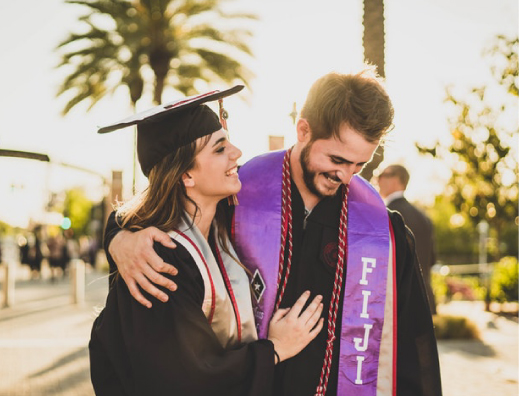This course requires 104–120 UCAS tariff points including a minimum of 2 A-levels or equivalent. We are happy to consider a combination of qualifications and grades to meet the overall tariff, for example A-levels A*CC, ABC, BBB or BCC, BTECs DDM or DMM. You can use the UCAS calculator to see how your qualifications equate to UCAS tariff points.
If English is not your first language you'll need IELTS (Academic) 6.0 with minimum 5.5 in each component, or equivalent.
Why study BA (Hons) Product Design Futures at BU?
Learn the skills and knowledge to future proof your career, you’ll meet the future needs of design in a market where automation will transform professions and create new opportunities
Focus on the ethical development of new products and how they can be designed to solve real-world problems without causing environmental issues
Access the latest virtual design tools such as virtual reality, CAD systems, 3D solid modelling and 3D printing
Spend your third year on a work placement, gaining at least 30-weeks experience in a relevant industry
Exhibit your projects at the Festival of Design & Engineering, giving the public and potential employers an insight into how it could impact the future
Use state of the art facilities including a specialist CAD laboratory and our Innovation Centre.
UCAS Code: W420
More info: Click here
Year 1
Core units
Design Projects 1: The unit aims to develop a holistic approach to design that is creative, dynamic and structured, thereby encouraging the development of creative and analytical thinking in design. You will create a physical and/or digital model, prototype or visual and present the results in a professional manner.
Design Studies 1: This unit will develop your understanding of contextual and historic design issues and perspectives and your understanding of the application of psychology and physiology for effective ergonomic product design.
Design Communication: You will apply key aspects of manual drawings through the exploration of both form and functional elements of idea generation. You will use digital image manipulation to edit and enhance a variety of photographic manual and computer generated output.
Materials & Technology A: Lab sessions will develop your ability to select, test and exploit materials and manufacturing processes in the synthesis of product design solutions. You will learn to apply a range of fundamental mathematical and engineering principles to analyse basic product design problems.
Materials & Technology B: This unit will further develop your knowledge of a wide range of materials and their basic properties in order to understand how these properties may be exploited or modified to satisfy a design requirement.
Team Project: You will practise collaborative work to generate a wide range of design ideas, concepts and design proposals in response to set design briefs, and effectively present to different audiences to communicate your ideas.
Year 2
Core units
Manufacturing & Technology: This unit will build up your understanding of the properties and uses of functional materials used in modern manufacturing for competitive product development.
Product Design Tools: This unit will broaden your understanding and application of the principles of product design visualisation, presentation, tools and techniques.
Design Futures Projects 2A: The unit will enable you to solve increasingly complex design problems in a creative, dynamic and structured manner, applying a holistic approach to design, and present your design solutions in a professional manner using appropriate communication techniques.
Design Futures Projects 2B: You will expand your ability to employ materials, media, techniques, methods, technologies and tools associated with product design through drawing, modelling, computer visualisation and 3D printing using your skill and imagination.
Management & Commercialisation: This unit will introduce students to key aspects of business and management that relate to the development and delivery of commercial value, and the issues facing business functions such as marketing, operations and finance.
Future Trends & Sustainability 1: You will explore how designers can learn from other examples of good practice and consider alternative philosophies in order to inform the design process and develop design sense in order to challenge the current patterns of design for manufacture and develop products to add value to the lives of their users.
Optional placement year
You may choose to complete an optional 30-week minimum work placement which can be carried out anywhere in the world. The placement year offers a chance to gain experience and make contacts for the future.
Final year
Core units
Future Trends & Sustainability 2: You will be expected to be able to challenge existing design practice and enable the application of the knowledge of ethics and sustainability to the design of products.
Design Futures Projects 3: This project will combine the broad range of skills and understanding gained during the whole course to create 3D models, CAD and visualisations of your final product design.
Business Development: Approaches to strategic management and thinking will be examined to capitalise on your entrepreneurial spirit and business acumen.
Visual Concept Communication: Developing your strategic thinking in terms of designing and communicating digital prototypes effectively, you will validate and sell designs before they are produced, using high-impact visuals, virtual interaction, accurate lighting effects and animations.

This course incorporates the latest design thinking and technological tools to produce graduates who understand global trends, challenges, and opportunities to advance innovation and shape the future of the design industry and environment.

OSHC: 624 ($) GBP per year